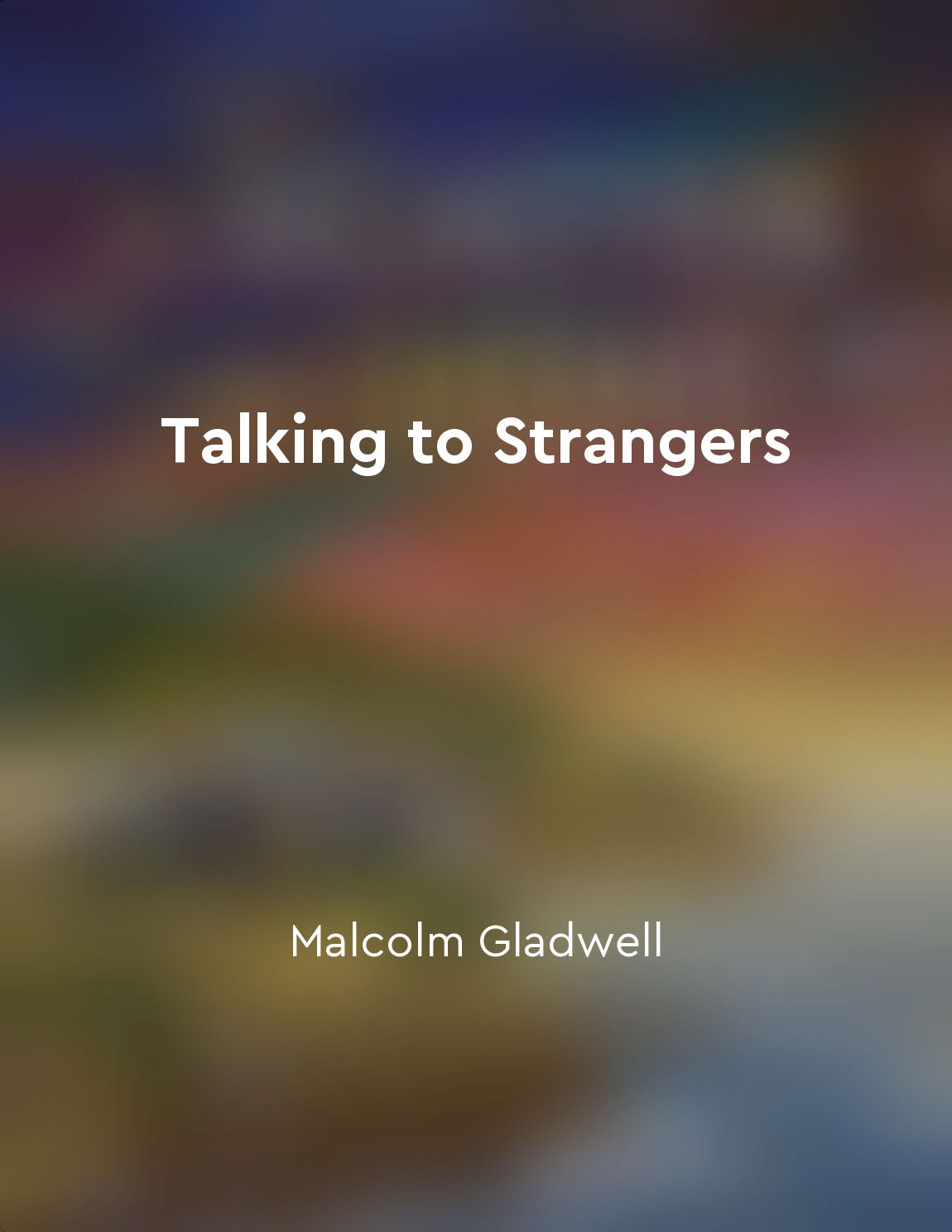Capgras syndrome causes a disconnect between recognition and emotion from "summary" of Phantoms in the Brain by V. S. Ramachandran
Capgras syndrome is a peculiar neurological condition in which patients recognize familiar people but feel no emotional connection towards them. This disconnect between recognition and emotion is a fascinating aspect of the disorder. Imagine looking at your mother and knowing it is her, yet feeling like she is an imposter. This uncoupling of recognition and emotion is what characterizes Capgras syndrome. One theory suggests that the disconnect in Capgras syndrome occurs because there is a malfunction in the neural circuits responsible for processing emotional responses. When a person with Capgras syndrome sees a loved one, the brain recognizes them but fails to trigger the appropriate emotional response. As a result, the individual experiences the familiar person as a stranger, leading to feelings of suspicion and detachment. Another explanation for the disconnect in Capgras syndrome involves a breakdown in the connectivity between the brain regions responsible for facial recognition and emotional processing. In healthy individuals, seeing a familiar face activates both the recognition and emotional centers of the brain simultaneously. However, in people with Capgras syndrome, this connection seems to be disrupted, causing the recognition of a familiar face without the accompanying emotional response. Furthermore, studies have shown that patients with Capgras syndrome often exhibit heightened activity in brain regions associated with analysis and categorization, while areas linked to emotion processing show reduced activity. This imbalance in neural activity could explain why individuals with Capgras syndrome struggle to reconcile the recognition of familiar faces with the lack of emotional connection.- Capgras syndrome presents a unique case of cognitive dissonance, where the brain recognizes a person but fails to evoke the appropriate emotional response. This disconnect between recognition and emotion sheds light on the intricate workings of the human brain and highlights the delicate balance required for seamless social interactions. Understanding the underlying mechanisms of Capgras syndrome can offer valuable insights into the complexities of human perception and emotion.
Similar Posts
Practice active listening to improve your nonverbal communication skills
To truly understand nonverbal communication, one must be able to actively listen to others. Active listening involves not only ...

Hone your observation skills
To be successful in manipulating others, it is crucial to sharpen your observation skills. This means paying close attention to...

Humans are not good at judging strangers' intentions
In the complex world of human interaction, understanding the intentions of strangers can be a challenging task. We often rely o...

Brain constantly seeks patterns
Our brains are wired to constantly search for patterns in the world around us. This innate ability helps us make sense of the v...
Emotional diversity is beneficial for overall brain function
The exquisite orchestra of emotions that plays within each of our brains is a complex and dynamic symphony. Just as a diverse r...
Yoga and mindfulness can be beneficial for trauma recovery
Yoga and mindfulness can be beneficial for trauma recovery. By practicing yoga and mindfulness, individuals can learn to reconn...

The need for validation drives many of our actions and decisions
The need for validation is a powerful force that often goes unrecognized in our daily lives. It is a driving factor behind many...
Understanding body language can improve relationships and communication
Understanding body language can improve relationships and communication. Body language is a powerful tool that can help us deci...
Wellbeing is influenced by the quality of relationships
The quality of relationships plays a crucial role in shaping our overall sense of wellbeing. Our connections with others have a...

Nonverbal cues can reveal hidden intentions
When observing someone's body language, we can often uncover their true intentions, even when they are trying to conceal them. ...


